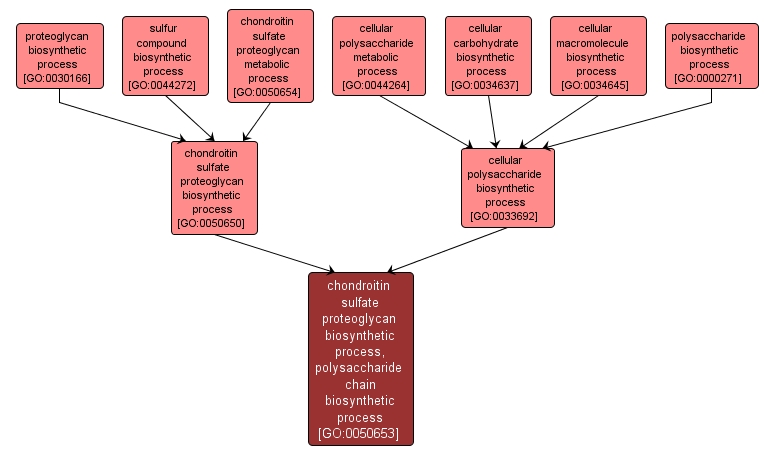GO TERM SUMMARY
|
| Name: |
chondroitin sulfate proteoglycan biosynthetic process, polysaccharide chain biosynthetic process |
| Acc: |
GO:0050653 |
| Aspect: |
Biological Process |
| Desc: |
The elongation of chondroitin sulfate proteoglycan chains by alternate addition of N-acetylhexosamine and GlcUA residues to the GAG-protein linkage region tetrasaccharide of chondroitin sulfate. |
Synonyms:
- chondroitin sulfate proteoglycan synthesis, polysaccharide chain synthesis
- chondroitin sulfate proteoglycan chain elongation
- chondroitin sulfate proteoglycan formation, polysaccharide chain biosynthesis
- chondroitin sulphate proteoglycan biosynthesis, polysaccharide chain biosynthetic process
- chondroitin sulfate proteoglycan anabolism, polysaccharide chain anabolism
- chondroitin sulphate proteoglycan biosynthesis, polysaccharide chain biosynthesis
- chondroitin sulfate proteoglycan formation, polysaccharide chain formation
|
|

|
INTERACTIVE GO GRAPH
|














